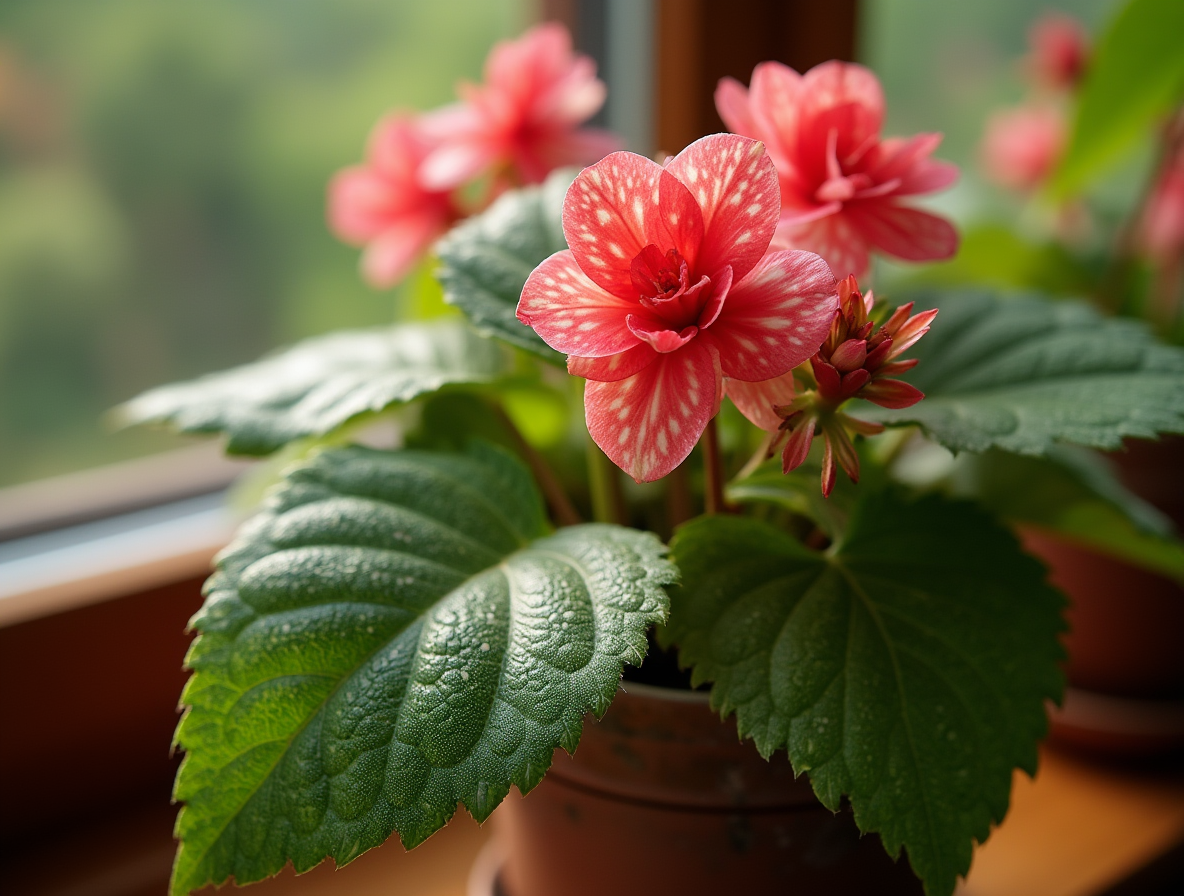How to Grow Angel Begonia: Easy Care Tips for Stunning Blooms
Angel Begonias, with their elegant wing-shaped leaves and vibrant blooms, are not just plants—they’re living art. These versatile houseplants are perfect for adding style and vibrancy to your home. Whether you’re a seasoned gardener or a beginner, growing Angel Begonias is easier than you might think. With a little care and attention, you can create a stunning display of flowers and foliage that will thrive both indoors and outdoors.
This guide will show you everything you need to know about Angel Begonia care. From light and watering needs to choosing the best soil and tackling common problems, we’ve got you covered. You’ll also find expert advice and personal insights to set you up for gardening success.

What Makes Angel Begonias Special?
Angel Begonias (scientific name Begonia coccinea) are a type of cane begonia known for their striking “angel wing” leaves and delicate flowers that bloom in clusters. Their bright colors and unique shape make them a favorite among gardening enthusiasts and indoor plant lovers alike.
“I fell in love with angel begonias for their unique foliage and flowers that can brighten up any space,” shares Emily Johnson, a passionate home gardener.
This plant are relatively low-maintenance, making them perfect for gardeners of all levels. Plus, they thrive equally well as indoor houseplants or as statement pieces in outdoor gardens.
Benefits of Angel Begonias:
- Visual appeal: Their leaves and blooms make them eye-catching additions to any décor.
- Versatility: These plants thrive in pots, hanging baskets, or garden beds.
- Air purification: Like many other houseplants, they help filter air indoors.
- Compact growth: Ideal for small spaces like apartments or patios.

Essential Angel Begonia Care Tips
Here’s how you can ensure your plant flourish and reward you with their iconic blooms.
1. Light Requirements
This plant love bright, indirect sunlight. Direct sunlight can scorch their delicate leaves, so choose a spot where they get plenty of filtered light.
- Indoors: Place your begonia near a south- or east-facing window filtered by a sheer curtain.
- Outdoors: Choose a shaded area that receives morning sunlight but is shielded in the afternoon.
“The key to success with angel begonias is to provide them with the right balance of light, water, and humidity,” advises John Green, founder of GreenThumbGuru.
2. Watering Schedule
Consistency is key when it comes to watering Angel Begonias. They prefer moist (but not soggy) soil.
- Water when the top inch of soil feels dry to the touch.
- Avoid watering the leaves directly to prevent fungal diseases.
- During winter, reduce watering as the plant naturally grows slower.
Pro Tip:
Opt for pots with drainage holes to prevent overwatering, which can lead to root rot.
3. Best Soil for Angel Begonias
This plant thrive in light, well-draining, and nutrient-rich soil.
- A peat-based soil mix combined with organic compost works wonders.
- Ensure aeration by adding perlite or coarse sand.
- For potted plants, use a potting mix specifically labeled for indoor houseplants.
4. Fertilizer for Angel Wing Begonias
To encourage growth and blooms, fertilize your plant regularly.
- Use a balanced liquid fertilizer (10-10-10) every two weeks during the growing season (spring and summer).
- Reduce feeding during autumn and winter when the plant grows less actively.
5. How to Prune Angel Begonias
Pruning your plant promotes healthy growth and keeps it looking tidy.
- Trim back any leggy stems or dead leaves with sterilized scissors.
- Pinch off spent flowers to encourage new blooms.
- General maintenance pruning can be done in early spring to shape the plant.
6. Humidity and Temperature Needs
Angel Begonias thrive in moderately humid environments.
- Ideal Humidity: 50–60%.
- Increase humidity by misting lightly, grouping your plants together, or placing them on a pebble tray filled with water.
- Temperature: Keep your plant in a space that’s between 65°F and 75°F. Protect them from sudden drops in temperature or frost during colder months.

Common Angel Begonia Problems and Solutions
Even with the right care, you might encounter some challenges. Here’s how to address the most common issues:
- Yellow Leaves: Likely caused by overwatering. Check soil moisture and adjust your watering schedule.
- Brown Tips: A sign of low humidity. Increase humidity levels using a misting routine.
- Pest Infestations: Aphids and spider mites occasionally target Angel Begonias. Treat with insecticidal soap or neem oil.
- No Blooms: Insufficient light or nutrients could be the culprit. Reassess their lighting conditions and fertilizer routine.

How to Propagate Angel Begonias
The easiest way to propagate Angel Begonias is through stem cuttings.
- Select a healthy stem with 2–3 nodes.
- Cut just below a node using sterilized scissors.
- Place the cutting in water or moist soil.
- Wait for roots to develop (4–6 weeks), then transfer to a pot with fresh soil.
Propagation not only expands your collection but also makes a thoughtful gift for fellow plant lovers!
My Personal Experience with this plant
A few years ago, I stumbled upon an Angel Begonia at a local gardening show. Intrigued by its beauty, I brought one home. By providing bright indirect light, consistently moist soil, and a little extra humidity, my begonia flourished. Its vibrant blooms quickly became the centerpiece of my living room, and I fell in love with its charm.
This experience led me to explore and understand Angel Begonias in-depth, eventually sharing my passion with others. Gardening isn’t just a hobby—it’s a way to bring life and character into your space.

Transform Your Home with Angel Begonias
Angel Begonias are a truly rewarding plant that combines beauty with ease of care. Their elegant foliage, vibrant blooms, and adaptability make them a favorite among gardening enthusiasts and home decorators.
Whether you want to add charm to your home décor or grow a thriving indoor garden, Angel Begonias won’t disappoint. By following the tips outlined here, you’ll enjoy healthy, beautiful plants for years to come.
Looking for expert-recommended tools and supplies to care for your plant? Check out the resources below or visit your local gardening forums to share your blooming success!




